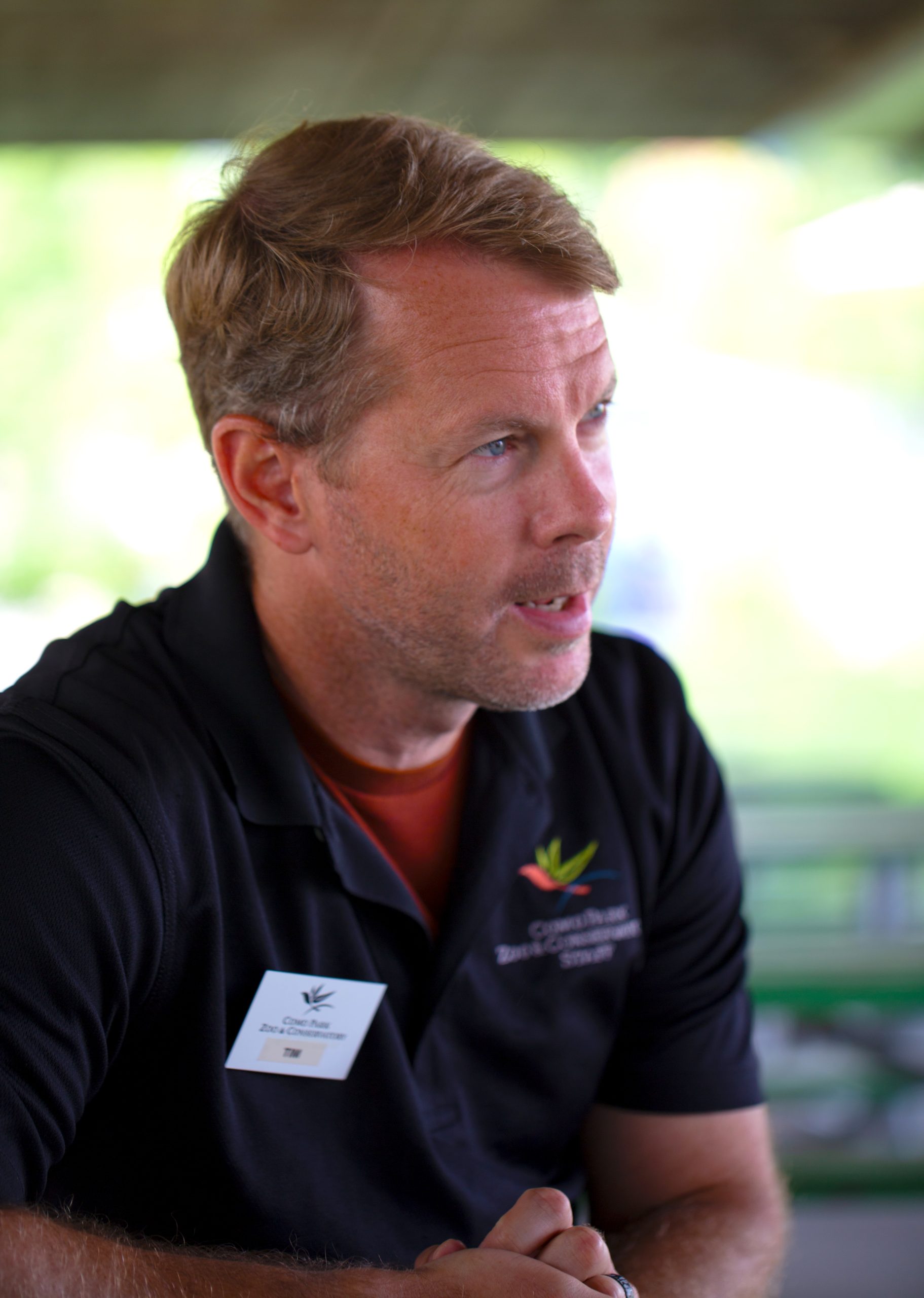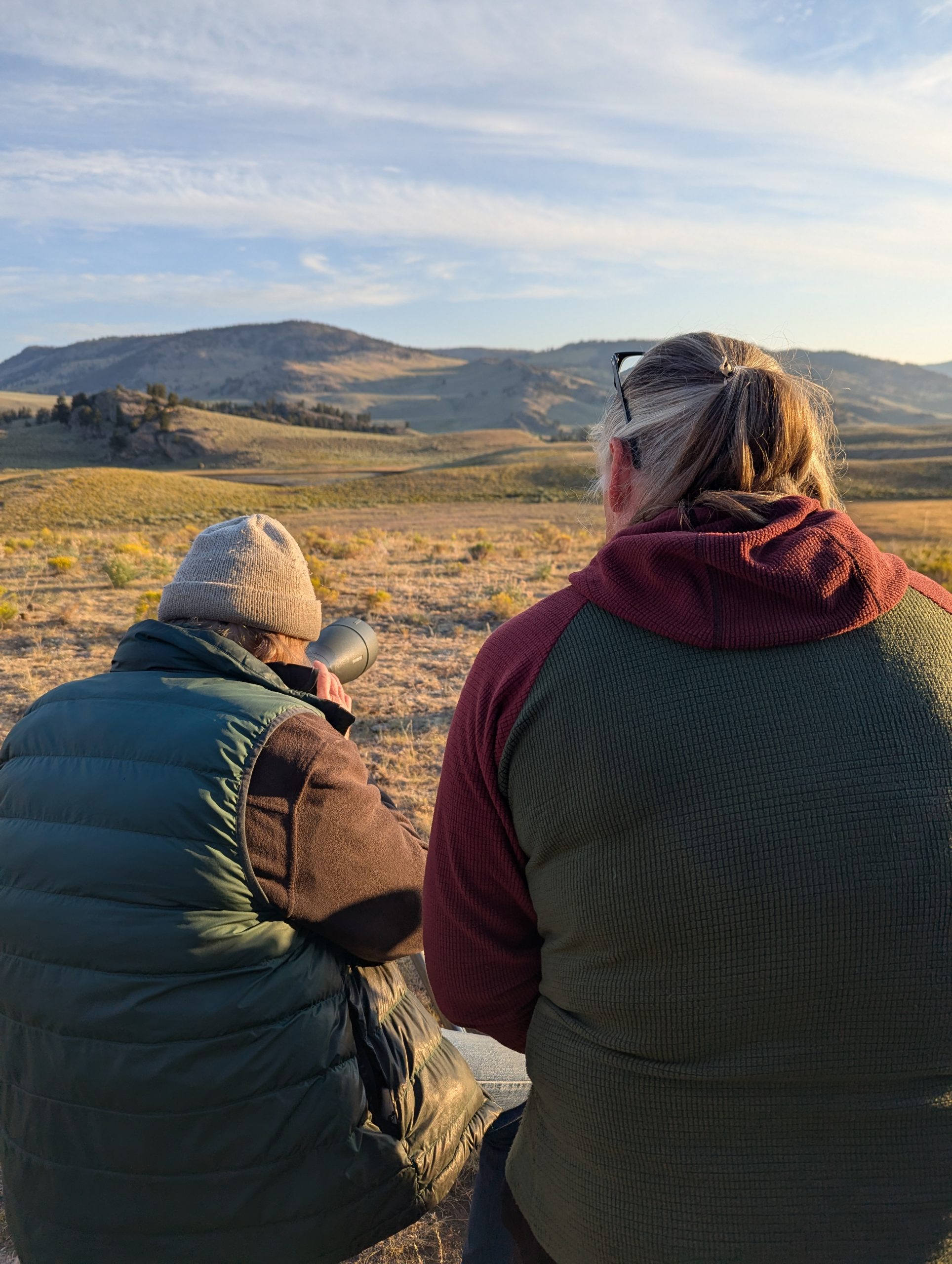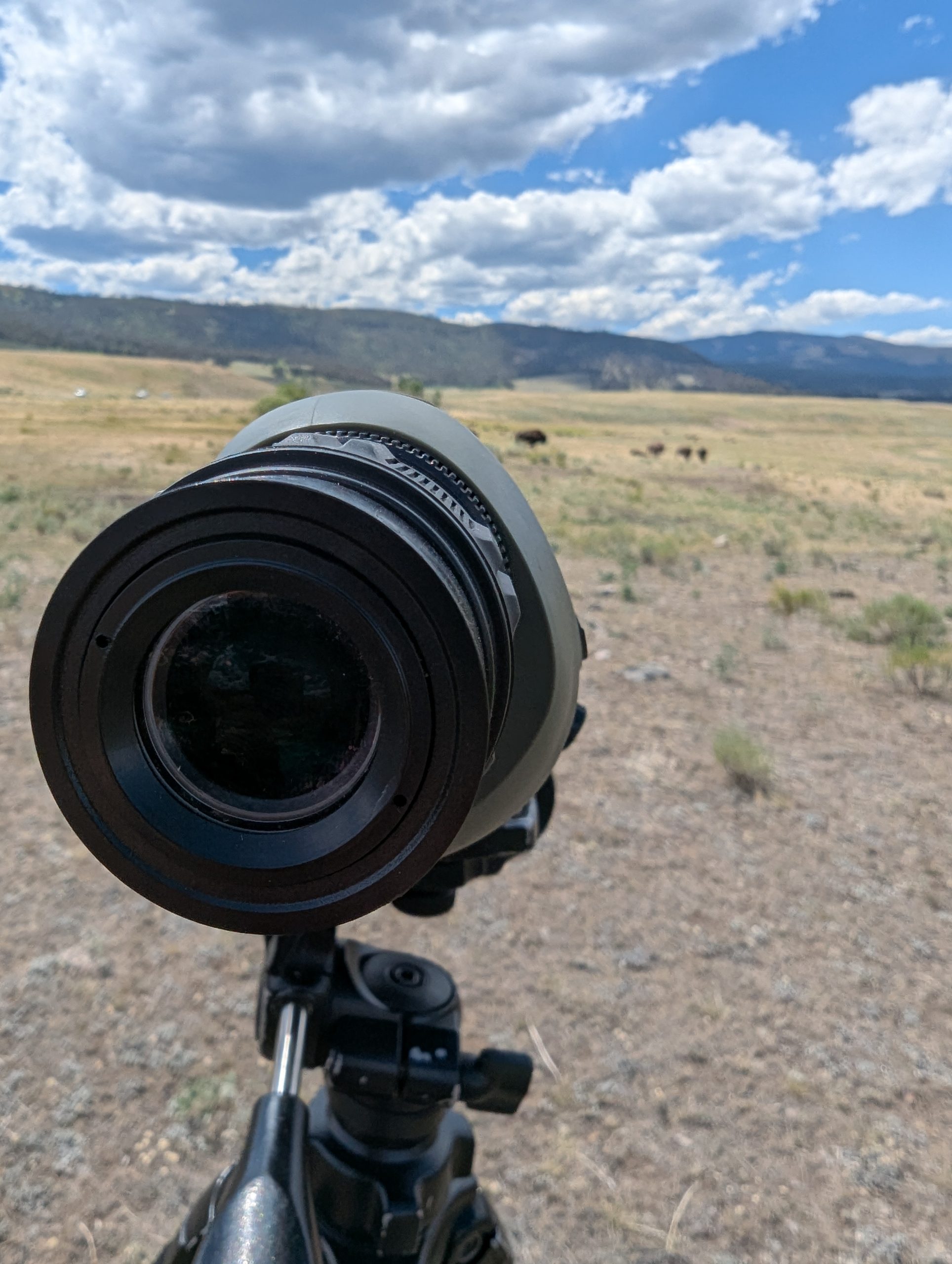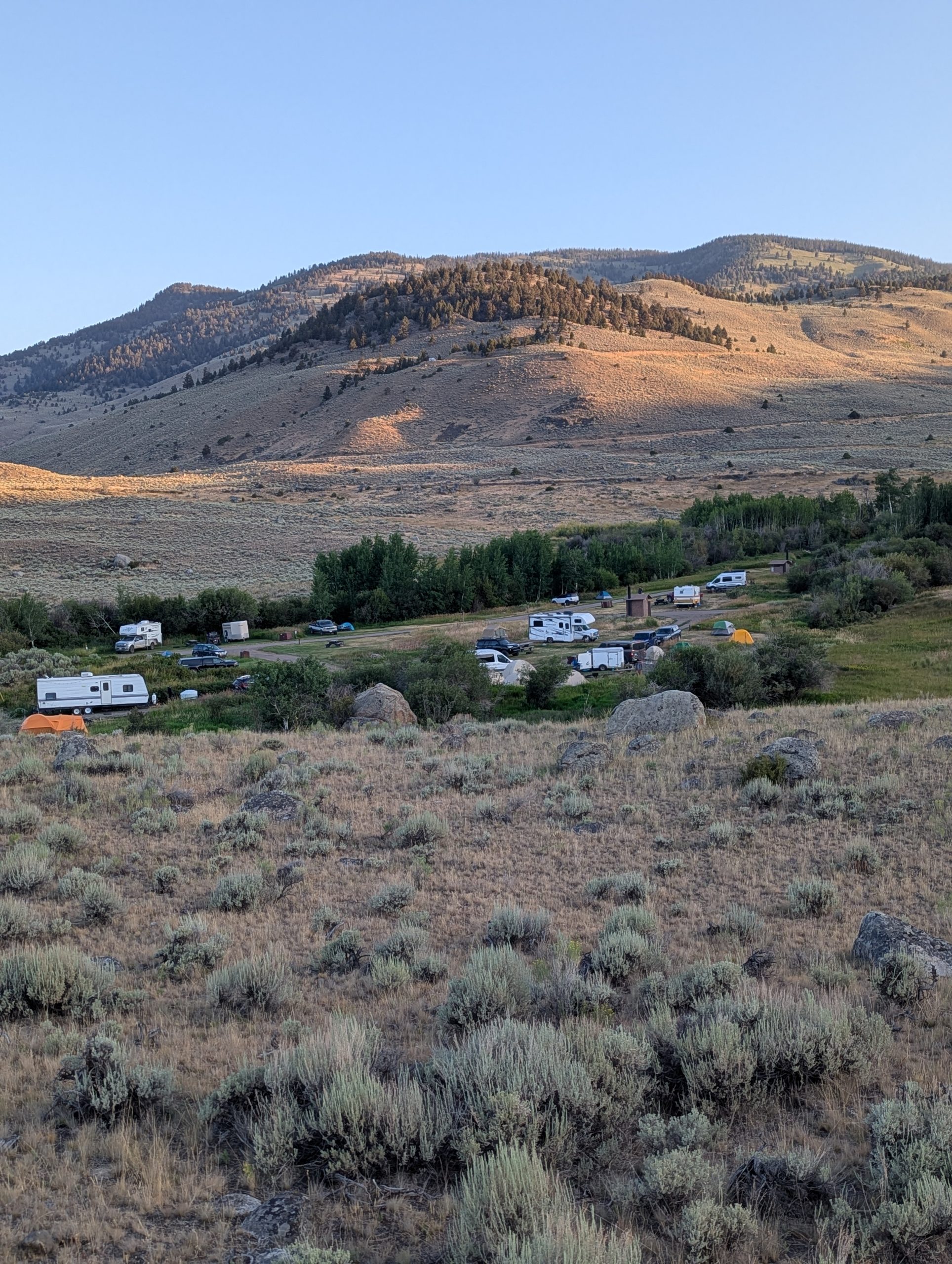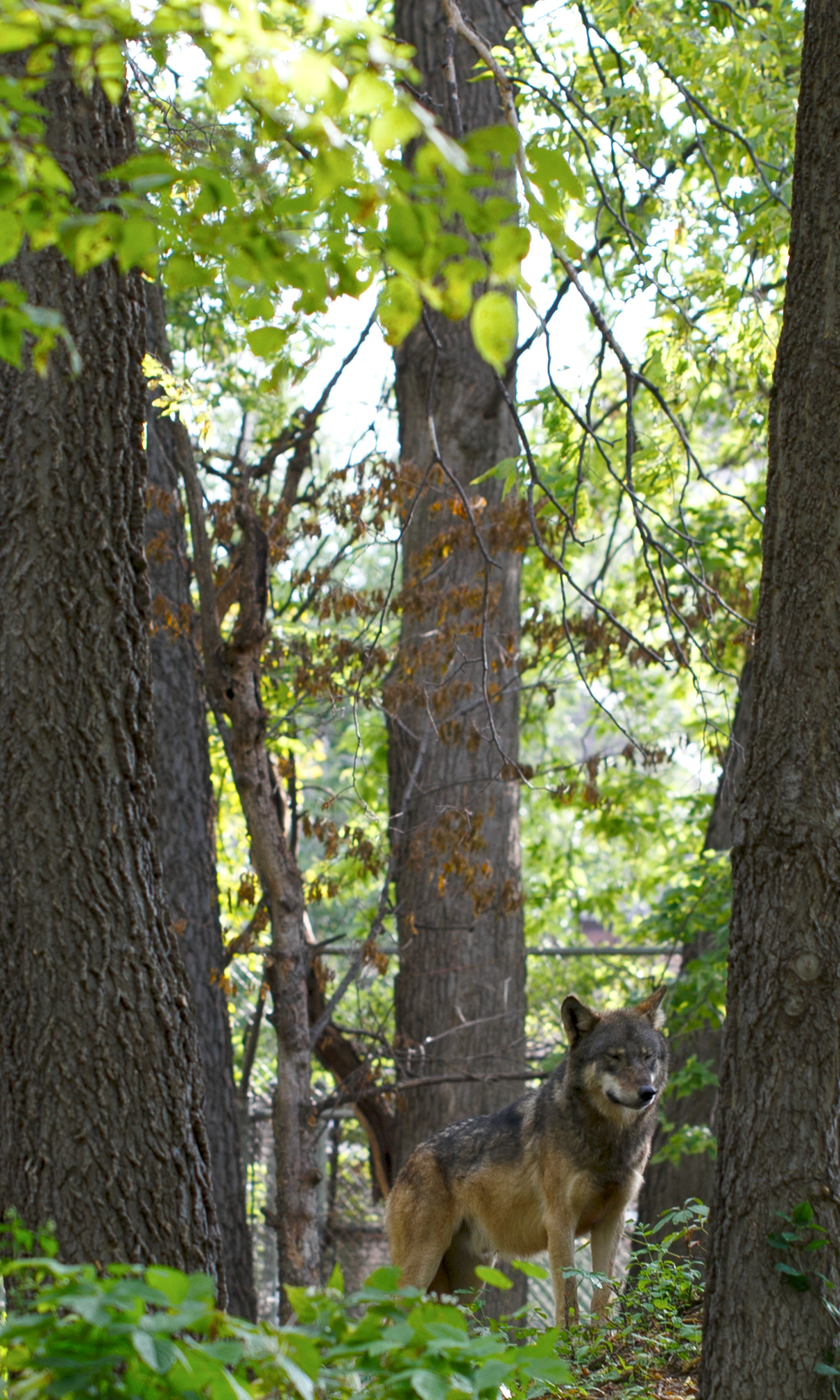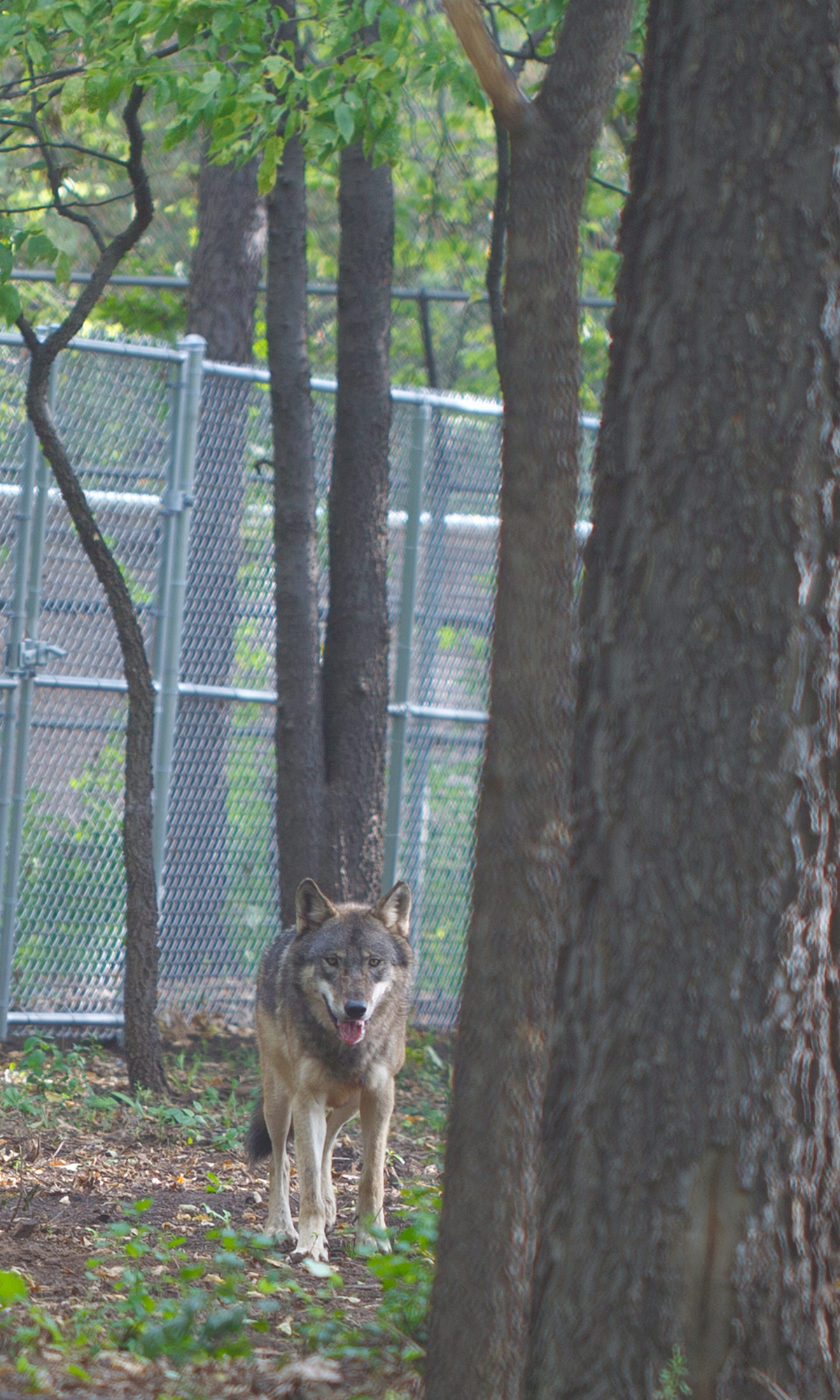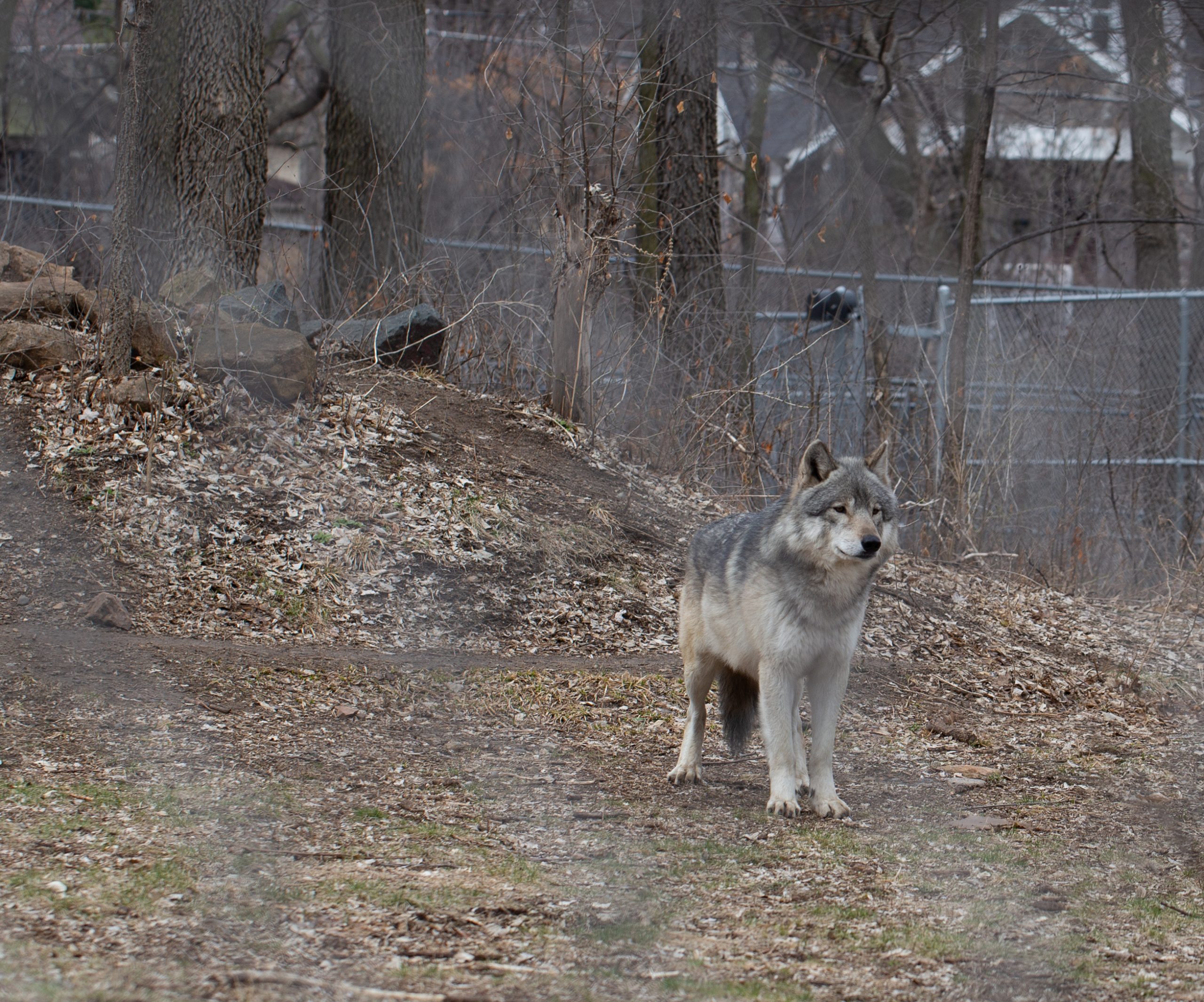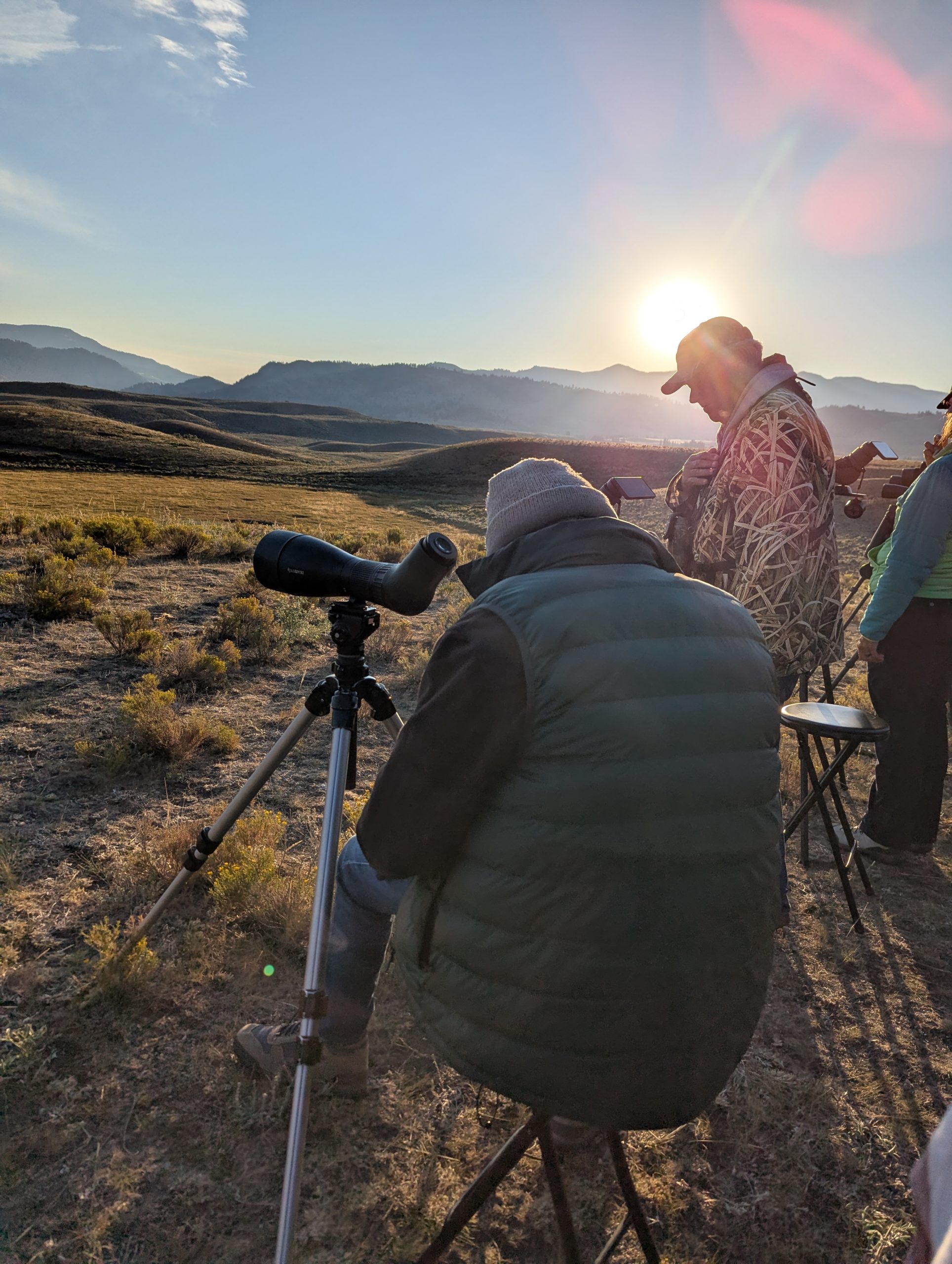
As Como’s education coordinator, Tim Buer is very well acquainted with Como Zoo’s resident wolves, Nicky and Cerberus. But on a recent trip to Yellowstone National Park, Buer developed a whole new appreciation for the species, even while observing them through a scope from nearly a mile away.
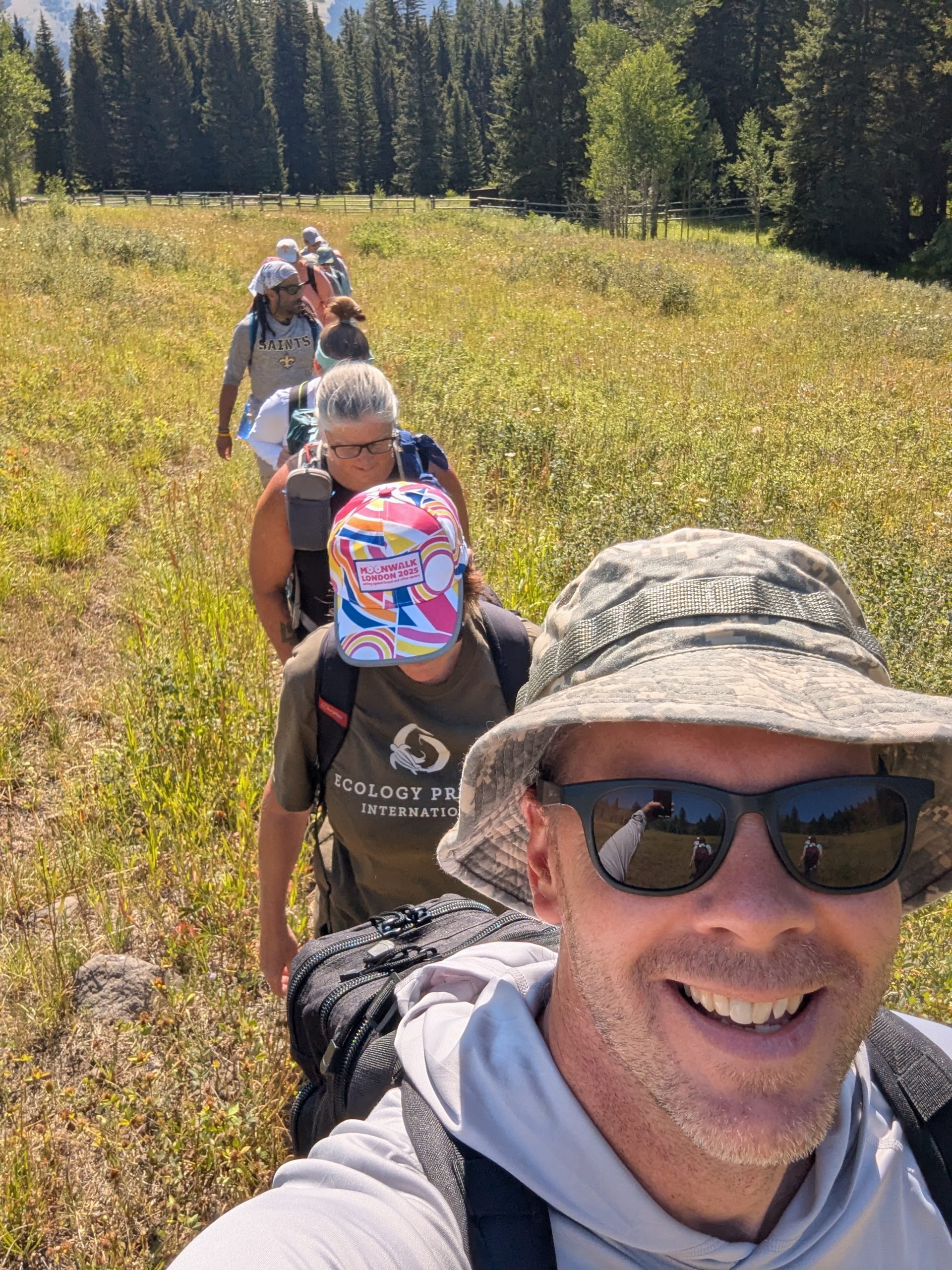
“We’re lucky to have a pretty stable wolf population in Minnesota, but seeing them in the wild in Yellowstone, where they’ve made a successful return, was just really exciting,” he says.
Rising before dawn to watch as some of Yellowstone’s wolves started their day was one of the highlights of a week-long professional development trip made possible by Como Friends’ Conservation Champions program. With help from the competitive microgrant program, Buer was able to join a cohort of 13 other educators from around the country in an immersive conservation experience led by Ecology Project International, a nonprofit that brings students and scientists together on field research projects around the world. Sleeping in tents in and around Yellowstone’s Northern Range, the group collected a range of data to support scientists in the field, from gathering fecal samples from the Lamar Valley’s roaming herds of bison, to observing wild wolf behavior alongside Rick McIntyre, a retired park ranger who’s become a world-renowned wolf conservation expert.
“That was probably the highlight of the whole trip for me, learning from a researcher who’s been in Yellowstone for the duration and who could talk about what the reintroduction of wolves has meant,” Buer says. “For me, one of the most interesting things was hearing how much the loss of wolves a generation ago affected everything in the ecosystem, driving up the elk population, that would then chew down all of the aspen trees. Now with only about a hundred wolves in the park, it’s helped to bring elk back to their normal capacity, and made everything more stable. After eight decades of decline, aspen trees are flourishing again, thanks to wolves keeping elk herds over grazing in check. Their return has reshaped the landscape, showing how one species can restore balance to an entire ecosystem.
“Another fascinating thing we learned was the positive economic impact that those wolves have,” he continues. “It’s estimated that one wolf brings in about $82 million in revenue for the park each year.”
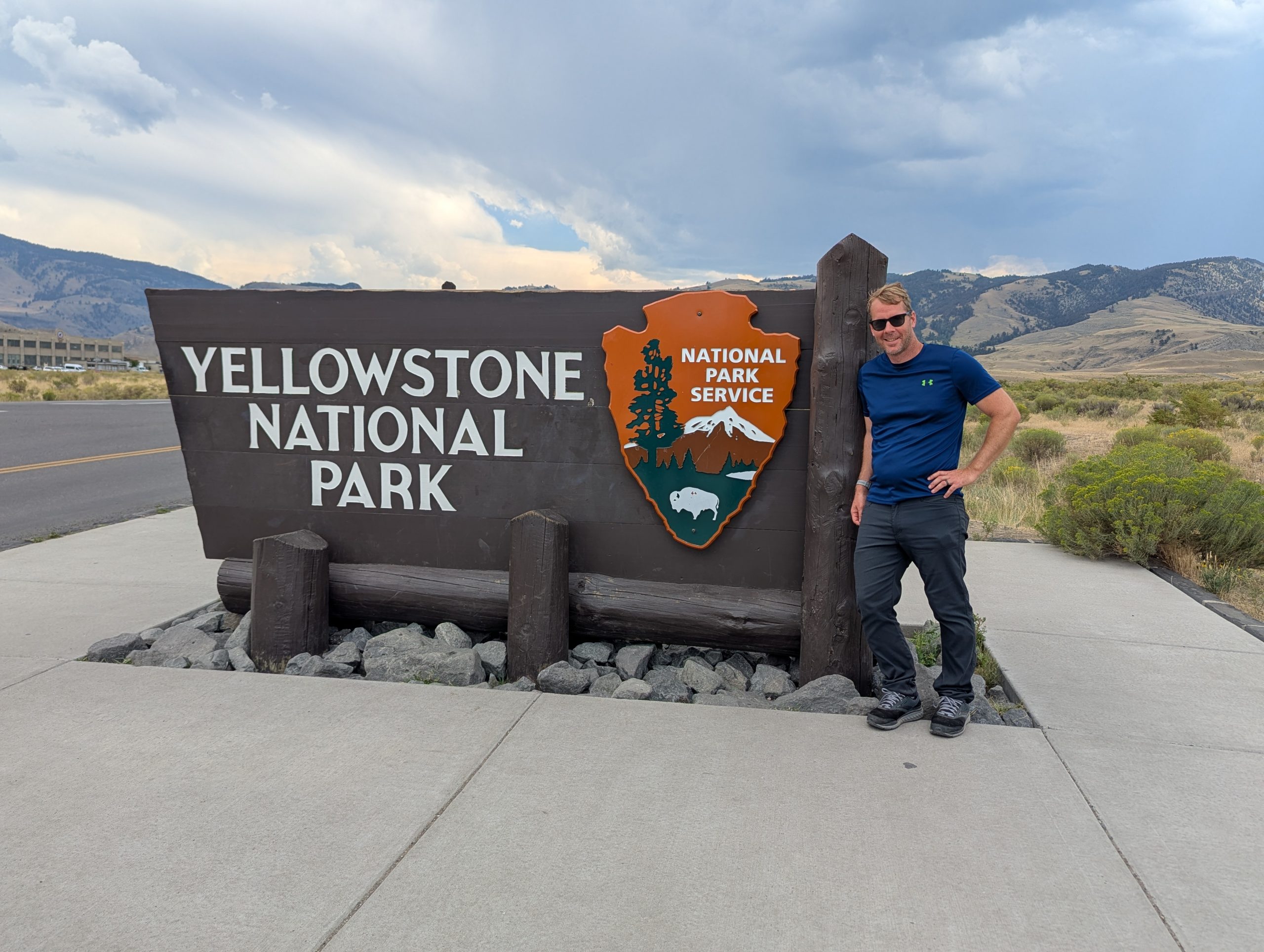
Facts like these are very likely to find their way into Como’s conservation education curriculum, including the new Fourth Grade Field Trip partnership launching later this fall. Following the success of Como’s long-running Second Grade Field Trip program with the St. Paul Public School District, this new offering highlights a series of Conservation Champions projects from over the years, Buer says, showing fourth graders a little bit of the conservation work our own staff has done, and connecting it to the animals that live at Como Zoo.”
The station-based class highlights first-person experiences like senior keeper Jill Erzar’s trips to Africa to support giraffe conservation in the wild and aquatics keeper Kelley Dinsmore’s experience rehabilitating injured and orphaned penguins on the coast of South Africa. “We’re using a see, learn, and do model with stations that students can visit, each with a different conservation theme,” Buer says, all while students learn more about the people behind Como’s plants and animals.
While Buer is still unpacking everything he learned about the extraordinary animals of Yellowstone, he says he looks forward to working some of his experiences and discoveries into Como’s conservation curriculum in the months ahead.
“Yellowstone has a very storied history, and there’s a lot that’s known about it, but also a lot that people probably don’t know about it,” he says. “I really look forward to sharing some of these conservation stories with our students.”
